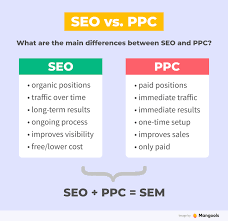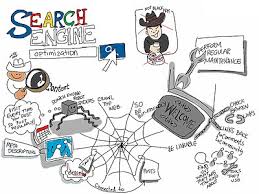SEO Ads: Boosting Your Online Visibility and Driving Targeted Traffic
In today’s digital age, having a strong online presence is crucial for businesses to thrive and succeed. With millions of websites competing for attention, it’s essential to find effective strategies to stand out from the crowd. One powerful tool that can help you achieve this is SEO ads.
Search Engine Optimization (SEO) is the process of optimizing your website to rank higher in search engine results pages (SERPs). By incorporating relevant keywords, improving site speed, and enhancing user experience, SEO helps search engines understand your content better and promotes organic traffic. However, SEO takes time and effort to yield significant results.
This is where SEO ads come into play. SEO ads combine the benefits of traditional advertising with the power of search engine optimization. They allow businesses to quickly increase their visibility in search results while targeting specific keywords and demographics.
Here are some key advantages of using SEO ads:
Increased Visibility: By bidding on relevant keywords, your website can appear prominently at the top of search results, ensuring that users see your brand when they’re actively searching for products or services like yours.
Targeted Traffic: Unlike traditional advertising methods that cast a wide net, SEO ads enable you to reach a highly targeted audience based on specific keywords and demographics. This ensures that your advertisements are shown to people who are more likely to be interested in what you offer.
Cost-Effective: With SEO ads, you only pay when someone clicks on your ad (Pay-Per-Click or PPC), making it a cost-effective advertising method. Additionally, by targeting specific keywords and demographics, you can maximize your budget by reaching potential customers who are most likely to convert.
Measurable Results: One significant advantage of digital advertising is the ability to track and measure performance accurately. With SEO ads, you can monitor metrics such as click-through rates (CTR), conversion rates, and return on investment (ROI), allowing you to optimize your campaigns for better results.
To make the most of SEO ads, it’s essential to follow these best practices:
Keyword Research: Conduct thorough keyword research to identify the most relevant and high-performing keywords for your business. Use tools like Google Keyword Planner or SEMrush to discover keywords with high search volumes and low competition.
Compelling Ad Copy: Craft compelling and concise ad copy that highlights your unique selling points and encourages users to click on your ads. A strong call-to-action can significantly improve click-through rates.
Landing Page Optimization: Ensure that the landing page users are directed to after clicking on your ad is relevant, user-friendly, and optimized for conversions. A seamless user experience can increase the likelihood of visitors taking desired actions, such as making a purchase or filling out a form.
Continuous Monitoring and Optimization: Regularly monitor the performance of your SEO ads campaigns and make necessary adjustments based on data insights. Testing different ad variations, adjusting bids, and refining targeting can help improve campaign effectiveness over time.
In conclusion, SEO ads provide businesses with a powerful tool to enhance their online visibility, drive targeted traffic, and increase conversions. By combining the benefits of traditional advertising with strategic search engine optimization techniques, businesses can reach their desired audience effectively while optimizing their advertising budget. Embrace SEO ads as part of your digital marketing strategy, and watch as your online presence flourishes in an increasingly competitive landscape.
7 Essential Tips for Optimizing SEO Ads
- Research relevant keywords for your target audience and incorporate them into your ad copy.
- Optimize your ad title and description to make sure they are as engaging as possible.
- Include a call-to-action in the ad copy to encourage users to take action on the advertisement.
- Use targeted landing pages that are optimized for search engine optimization (SEO) and conversion rates.
- Utilize A/B testing to find out which ads are performing best and adjust accordingly
- Monitor competitor activity and adjust your own campaigns accordingly
- Track key performance indicators (KPIs) such as cost per click, click-through rate, impressions, etc., to measure campaign success
Research relevant keywords for your target audience and incorporate them into your ad copy.
Researching relevant keywords for your target audience and incorporating them into your ad copy is a crucial tip for optimizing your SEO ads. Keywords are the foundation of any successful digital marketing campaign, as they help connect your ads with the right audience at the right time.
To begin, it’s essential to conduct thorough keyword research using tools like Google Keyword Planner, SEMrush, or other keyword research tools. Identify keywords that are not only relevant to your business but also have a high search volume and low competition. These keywords will help you reach a larger audience while minimizing competition from other advertisers.
Once you have identified the most valuable keywords, it’s time to incorporate them strategically into your ad copy. The goal is to create compelling and engaging ads that resonate with your target audience while maximizing visibility in search results.
When incorporating keywords into your ad copy, keep the following tips in mind:
- Be Relevant: Ensure that the chosen keywords align with the content of your ad and accurately represent what you offer. Irrelevant or misleading keywords can lead to a poor user experience and wasted advertising budget.
- Use in Headlines: Incorporate primary keywords into the headline of your ad whenever possible. This helps grab attention and immediately communicates relevance to users searching for those terms.
- Include in Descriptions: Sprinkle secondary keywords throughout the descriptions of your ads to provide additional context and reinforce relevance. However, avoid keyword stuffing or overusing them unnaturally, as it can negatively impact readability and user experience.
- Highlight Benefits: While incorporating keywords is important, don’t forget about highlighting the unique selling points and benefits of your product or service. Focus on crafting persuasive ad copy that appeals to users’ needs and desires.
- Test and Optimize: Continuously monitor the performance of your SEO ads campaigns by tracking metrics such as click-through rates (CTR) and conversion rates. Test different variations of ad copy with various keyword placements to identify what resonates best with your target audience. Use this data to optimize your ads and refine your keyword strategy over time.
By conducting thorough keyword research and strategically incorporating them into your ad copy, you can enhance the relevance of your SEO ads, improve visibility in search results, and attract the right audience to your website. Remember, effective keyword usage is a powerful tool in maximizing the success of your digital advertising campaigns.
Optimize your ad title and description to make sure they are as engaging as possible.
Optimize Your SEO Ad Title and Description for Maximum Engagement
When it comes to SEO ads, one crucial aspect that can make or break the success of your campaign is the ad title and description. These elements serve as your first opportunity to capture the attention of potential customers and entice them to click on your ad. To ensure maximum engagement, it’s essential to optimize your ad title and description effectively.
First and foremost, it’s important to understand the importance of relevance. Your ad title and description should align closely with the keywords you are targeting. This helps search engines recognize the relevance of your ad to users’ search queries, increasing the chances of your ad being displayed prominently in search results.
To make your ad title engaging, consider incorporating compelling words that grab attention. Use action verbs or descriptive phrases that highlight the unique selling points of your product or service. For example, instead of a generic title like “Buy Shoes Online,” consider something more captivating like “Step into Style: Shop Trendy Shoes Online Today!”
In addition to an engaging title, a well-crafted description is equally important. The description should provide a concise overview of what users can expect when they click on your ad. Focus on highlighting key benefits or features that set you apart from competitors. Use persuasive language that appeals to users’ needs or desires.
Remember to keep your descriptions concise and easy to read. Break up information into short sentences or bullet points for better readability. Including any special offers, promotions, or unique selling propositions can also help capture attention and drive clicks.
A crucial aspect often overlooked is including a strong call-to-action (CTA) within both the title and description. A clear CTA encourages users to take action by clicking on your ad. Examples include “Shop Now,” “Learn More,” or “Get Started Today.” A compelling CTA helps create a sense of urgency and directs users towards the desired action you want them to take.
Lastly, don’t forget to test and refine your ad titles and descriptions. A/B testing different variations can help you identify what resonates best with your target audience. Monitor key metrics such as click-through rates (CTR) and conversion rates to determine which ad copy performs most effectively.
In conclusion, optimizing your SEO ad title and description is crucial for maximizing engagement and driving clicks. By crafting engaging titles, providing compelling descriptions, including strong CTAs, and continuously testing and refining your copy, you can increase the likelihood of attracting potential customers and achieving your advertising goals. Take the time to optimize these elements, as they play a significant role in the success of your SEO ad campaigns.
Include a call-to-action in the ad copy to encourage users to take action on the advertisement.
Boost Conversions with Effective Call-to-Actions in SEO Ads
When it comes to running successful SEO ads, one crucial element that should never be overlooked is the call-to-action (CTA). A well-crafted CTA can make a significant difference in encouraging users to take action on your advertisements and ultimately boost conversions.
A call-to-action serves as a clear instruction or prompt that directs users on what action they should take next. It could be as simple as “Shop Now,” “Sign Up Today,” or “Learn More.” Including a compelling CTA in your ad copy can create a sense of urgency and motivate users to click on your ad, visit your website, and engage with your business.
Here’s why incorporating a strong call-to-action is essential for the success of your SEO ads:
Clarity: A CTA provides clarity to users about what they can expect when they click on your ad. By explicitly stating the desired action, you eliminate any confusion and guide users towards taking the intended step.
Urgency: By using persuasive language and time-sensitive phrases like “Limited Time Offer” or “Act Now,” you create a sense of urgency that encourages immediate action. This can be particularly effective in driving conversions and increasing click-through rates.
Engagement: A well-crafted CTA can entice users to engage with your brand further by exploring your website, signing up for newsletters, or making a purchase. It serves as an invitation for users to take the next step in their customer journey.
Conversion Optimization: Including a CTA allows you to measure the success of your SEO ads more effectively. By tracking click-through rates and conversion rates associated with specific CTAs, you gain valuable insights into which calls-to-action resonate best with your target audience.
To create an effective call-to-action for your SEO ads, consider these tips:
Be Clear and Concise: Use straightforward language that clearly communicates the action you want users to take. Keep your CTA short and to the point, ensuring it stands out within your ad copy.
Create a Sense of Urgency: Incorporate words or phrases that evoke a sense of urgency, encouraging users to act immediately. Limited-time offers or exclusive deals can help create a sense of urgency and drive conversions.
Use Action Verbs: Start your CTA with strong action verbs that compel users to take action. Words like “Shop,” “Download,” “Subscribe,” or “Get Started” can be highly effective in motivating users.
Test and Optimize: Don’t be afraid to experiment with different CTAs to find what resonates best with your target audience. A/B testing can help you identify which call-to-action drives higher engagement and conversions.
Remember, a well-crafted call-to-action can significantly impact the success of your SEO ads by driving user engagement and increasing conversions. By providing clear instructions, creating a sense of urgency, and using persuasive language, you can encourage users to take action on your advertisements and achieve better results for your business.
Use targeted landing pages that are optimized for search engine optimization (SEO) and conversion rates.
Optimize Your SEO Ads with Targeted Landing Pages for Maximum Impact
When it comes to running successful SEO ads, one crucial tip that can significantly boost your campaign’s effectiveness is to use targeted landing pages. A landing page is the page where users land after clicking on your ad, and optimizing it for both search engine optimization (SEO) and conversion rates can make a world of difference.
First and foremost, targeted landing pages allow you to align your ad messaging with the specific keywords and audience you are targeting. By creating landing pages that are tailored to match the intent of your ads, you can provide a seamless user experience and increase the chances of converting visitors into customers.
To optimize your landing pages for SEO, start by incorporating relevant keywords in the page title, headings, meta tags, and throughout the content. This will help search engines understand the relevance of your page to users’ search queries. Additionally, ensure that your landing pages load quickly, have clean URLs, and are mobile-friendly – all factors that search engines consider when ranking websites.
In terms of conversion rate optimization (CRO), focus on creating a clear and compelling call-to-action (CTA) that guides visitors towards taking the desired action. Whether it’s making a purchase, filling out a form, or subscribing to a newsletter, make sure your CTA stands out and is prominently displayed on the page. Use persuasive copywriting techniques to highlight the benefits of taking action and address any potential concerns or objections.
Simplicity is key when designing your landing pages. Keep distractions to a minimum by removing unnecessary elements or navigation menus that may divert attention away from the main goal. Use eye-catching visuals such as images or videos that support your message and reinforce trust in your brand.
Regularly monitor and analyze the performance of your targeted landing pages using analytics tools. Track metrics like bounce rates, time on page, and conversion rates to identify areas for improvement. A/B testing different variations of your landing pages can help you uncover what resonates best with your audience and optimize for better results.
Remember, the ultimate goal of using targeted landing pages is to provide a seamless and engaging experience for users, while also maximizing your SEO efforts and increasing conversion rates. By aligning your ad campaigns with optimized landing pages, you can ensure that visitors have a positive experience from the moment they click on your ad until they take the desired action.
Incorporate this tip into your SEO ads strategy, and watch as your campaigns become more effective, driving targeted traffic and delivering higher conversion rates.
Utilize A/B testing to find out which ads are performing best and adjust accordingly
Utilize A/B Testing to Optimize Your SEO Ads for Maximum Performance
When it comes to running successful SEO ads, it’s crucial to continuously refine and improve your campaigns. One effective way to achieve this is by utilizing A/B testing. A/B testing allows you to compare different versions of your ads and determine which ones perform best, enabling you to make data-driven decisions and optimize your advertising strategy.
Here’s how A/B testing works:
- Identify Variables: Start by selecting the specific elements of your ads that you want to test. This could include the headline, ad copy, call-to-action, visuals, or even the landing page associated with the ad.
- Create Variations: Develop multiple versions of your ads that differ in one key aspect. For example, you might create two versions of an ad with different headlines or test different visuals.
- Split Traffic: Divide your target audience into two groups and show each group a different variation of the ad. Ensure that the groups are randomly assigned so that you obtain unbiased results.
- Monitor Performance: Track the performance metrics for each version of the ad. This could include click-through rates (CTR), conversion rates, engagement metrics, or any other relevant data points.
- Analyze Results: Compare the performance of each variation and identify which one outperforms the others based on your predetermined goals and metrics.
- Implement Changes: Once you have identified a winning variation, implement those changes into your ongoing campaign or create new variations based on what you have learned from the testing process.
By utilizing A/B testing in your SEO ads strategy, you gain valuable insights into what resonates best with your target audience. It allows you to experiment with different approaches and iterate on your advertising efforts to maximize performance and return on investment (ROI).
Here are some tips for effective A/B testing:
– Test one variable at a time: To accurately determine which element impacts performance, focus on changing one aspect of the ad at a time. Testing multiple variables simultaneously can make it challenging to attribute results to specific changes.
– Give it enough time: Allow your A/B test to run for a sufficient duration to gather statistically significant data. Rushing the process may lead to misleading or inconclusive results.
– Consider your audience segments: Different audience segments may respond differently to various ad variations. Consider segmenting your audience and conducting A/B tests for each group separately.
– Iterate and repeat: A/B testing is an ongoing process. Continuously analyze your results, implement changes, and test new variations to optimize your SEO ads continually.
In conclusion, incorporating A/B testing into your SEO ads strategy is essential for driving continuous improvement and maximizing performance. By systematically testing different ad variations, you can gain valuable insights into what resonates best with your target audience and make data-driven decisions to optimize your advertising campaigns. Embrace A/B testing as a powerful tool in refining your SEO ads and achieving better results in the ever-evolving digital landscape.
Monitor competitor activity and adjust your own campaigns accordingly
Monitoring Competitor Activity: A Key to Successful SEO Ads Campaigns
When it comes to running effective SEO ads campaigns, staying ahead of the competition is crucial. One valuable tip to achieve this is to monitor your competitors’ activities and adjust your own campaigns accordingly. By keeping a close eye on what your competitors are doing, you can gain insights that help you make informed decisions and optimize your own advertising strategies.
Here’s why monitoring competitor activity is essential for successful SEO ads campaigns:
Identify New Opportunities: By observing what keywords and ad copy your competitors are using, you can discover new opportunities for your own campaigns. If you notice that a competitor is targeting a specific keyword successfully, you can consider incorporating it into your strategy as well.
Stay Updated with Trends: Monitoring your competitors allows you to stay up-to-date with the latest trends and changes in the industry. This information can help you adapt your campaigns accordingly and ensure that you’re not falling behind in terms of messaging or targeting.
Benchmark Performance: Comparing your campaign metrics against those of your competitors gives you valuable insights into how well you’re performing. If you notice significant discrepancies, it may be an indicator that adjustments are needed in areas such as ad copy, landing page optimization, or audience targeting.
Learn from Mistakes: Analyzing the missteps of your competitors can provide valuable lessons for improving your own campaigns. If a competitor’s ad fails to resonate with their target audience or if they make strategic errors, take note of these mistakes and avoid making similar ones yourself.
To effectively monitor competitor activity and adjust your SEO ads campaigns accordingly, follow these best practices:
Competitor Research: Use tools like SEMrush or SpyFu to identify who your main competitors are in the online advertising space. Analyze their keywords, ad copy, landing pages, and overall messaging to gain insights into their strategies.
Track Performance Metrics: Keep a close eye on your competitors’ performance metrics, such as ad positions, click-through rates, and conversion rates. This data can help you gauge the effectiveness of their campaigns and identify areas where you can improve.
Adapt and Optimize: Based on the insights gained from monitoring competitor activity, make adjustments to your own campaigns. Experiment with different ad variations, test new keywords, or refine your targeting to stay competitive and maximize your results.
Remember, monitoring competitor activity is not about copying their strategies outright but rather about learning from their successes and failures to enhance your own campaigns. By staying vigilant and adaptive in the ever-evolving digital landscape, you can position yourself for success with SEO ads.
Track key performance indicators (KPIs) such as cost per click, click-through rate, impressions, etc., to measure campaign success
When it comes to running successful SEO ad campaigns, tracking key performance indicators (KPIs) is essential. These metrics provide valuable insights into the effectiveness of your ads and help measure campaign success. By monitoring KPIs such as cost per click (CPC), click-through rate (CTR), impressions, and more, you can make data-driven decisions to optimize your campaigns and achieve better results.
Cost per click (CPC) is a crucial metric that measures the average cost you pay for each click on your ads. By tracking CPC, you can assess the efficiency of your ad spend and determine if adjustments are needed to maximize your budget. Lowering CPC while maintaining high-quality clicks can lead to increased ROI.
Click-through rate (CTR) measures the percentage of people who clicked on your ad after seeing it. A high CTR indicates that your ad is compelling and relevant to users’ search queries. Monitoring CTR helps you identify which ads are resonating with your target audience and which may need improvement. Experimenting with different ad variations can help boost CTR over time.
Impressions represent the number of times your ads were displayed to users. Tracking impressions gives you an idea of how frequently your ads are being seen by potential customers. If impressions are low, it may indicate that adjustments are needed in targeting or bidding strategies to increase visibility.
Conversion rate is another important KPI that measures the percentage of users who complete a desired action, such as making a purchase or filling out a form, after clicking on your ad. Tracking conversion rate allows you to gauge how effectively your ads are driving meaningful actions and generating leads or sales.
By regularly monitoring these KPIs, you gain valuable insights into campaign performance and can make informed decisions to optimize future efforts. Analyzing trends, identifying areas for improvement, and testing different strategies based on KPI data will help you refine your SEO ad campaigns for maximum success.
Remember that tracking KPIs is an ongoing process. Continuously monitor and analyze the data to identify patterns, make adjustments, and refine your campaigns. By doing so, you can ensure that your SEO ads are delivering the desired results, driving targeted traffic, and helping you achieve your marketing goals.




